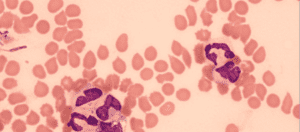Dog allergies are a dime a dozen and difficult to track down without veterinarians but how bad can they get and can they hurt the organs?
Under most normal circumstances, people assume that allergies just affect your nose; sneezing, maybe a little hacking, and coughing to help pass the mucus. They also assume that it must be the same in dogs. Well, there’s a little more to it than that, like a domino effect of sorts.
Allergies do affect the organs of dogs, especially if it’s a long-term situation and it goes on unimpeded for a time. Just like untreated allergies can make your life miserable, they can make a dog’s life miserable as well, primarily when it comes to the skin and digestive organs.
Of course, allergies aren’t just relegated to a dog’s nose, any more than it is for yours. They can have skin reactions as well, just like we do. While we’re on the topic of skin, it is an organ as well. In fact, it’s the largest organ of the entire body, for obvious reasons.
The liver comes next and is often — and wrongfully — given the attribution as being the largest organ. And it is, only “inside” the body, not counting the skin on the outside.
What Organs do Dog Allergies Affect?
Primarily the skin, however, it can go deeper than that and generally focuses on the digestive tract. The organs in the digestive tract, along with the liver, are responsible for getting waste out of the body or, detoxifying the body if you will.
When a dog’s liver can no longer separate the toxins from the good, it manifests in diarrhoea, vomiting, and probably a lot of grass-eating, something dogs do that signifies an upset tummy.
Allergies can show up in several ways in dogs and cats.
- Skin irritations such as hot spots
- Severe itching and hair loss
- Large, lumpy skin deposits under their coat
- Runny diarrhoea
- Gnawing incessantly
- Vomiting
Some of the symptoms may be intense or a little scary and the worst part is, it’s probably the very food that you’re feeding your dog. Including the type of dog food that your pup may be allergic to, there are a few common allergies that you’ll have to be on the lookout for.
- Chicken
- Corn
- Wheat
- Dairy
- Beef
These are not the only things that your dog might be allergic to, however, they are the most common allergies that your pup might be dealing with, most of which are entirely found in their food.
The problem is, finding out which food your dog is allergic to because it’s not as if your suffering pup can tell you anything specific, one way or the other. Your veterinarian can help you narrow down the allergies through testing.
What Happens if Dog Allergies Go Untreated?
Untreated allergies, aside from being misery for your pup, will only exacerbate the situation. Secondary problems are what you will have to be concerned with if the allergies aren’t treated.
Secondary issues that come from the domino effect of untreated allergies can mean several things, none of which are going to be good for your dog.
- Atopic dermatitis
- Yeast infection of the skin
- White discharge from the eyes
- Snot discharge and crustiness around the nose
- Red, raw paws that look highly infected
- Severe hair loss
- Awful smell
Allergies that have gone on for a long time have effectively overwhelmed your dog’s liver and other organs that are designed to get the waste out of your body.
Once the dog’s liver can no longer rid the body of toxins, your dog’s other organs take up the cause and are quickly overwhelmed too. They’re overwhelmed because they are not designed to handle the toxin separation process like the liver.
These other intestinal organs and the skin can handle the small number of toxins, but nothing to the degree that the liver can.
Atopic Dermatitis; Yeast Infections of the Skin
If your dog’s allergies aren’t eliminated, it could lead to a severe case of atopic dermatitis, which is miserable for your pet to deal with, and if it’s an indoor dog, your home will absolutely reek of wet, thick, and cloying dog smell.
Atopic dermatitis is very common in dogs and develops over time if allergies aren’t recognized and addressed. It’s very similar to Flea Allergy Dermatitis. The treatment involves specialized shampoos and perhaps prescription-level shampoos and medicine.
However, the treatments are just that, treatments. They don’t solve the underlying problem, which is addressing the allergy itself.
Discharge: Eyes and Nose
This is a common result of untreated allergic reactions in your pup. The discharge around the eyes can be so severe that it fills up the areas all around the eyes with yellow, pus-like material.
Dogs, like us, can also have a lot of discharge from their nose in the form of mucus. This is by far one of the worst things that can happen to your dog as almost everything in their life is predicated on and dictated by their sense of smell.
How to Narrow Down the Source of the Allergy
Your vet will give your pup medicine to alleviate the symptoms and can give you some guidance and how to proceed, however, it’s going to be up to you to carefully document and work your way through the things that could be causing your dog’s allergic reactions.
If it’s something that happens around the same time every year, it could be a seasonal thing. If it’s constant and ongoing, it’s more likely an allergic reaction to food. Through saliva or blood tests, your vet can help you locate the source of the allergen.
However, oftentimes, they will just work with you to eliminate certain foods until you identify the underlying cause. Even with testing, by taking your dog’s saliva or blood, a vet may not be able to identify the specific allergen and what’s causing it.
Corn and wheat in dog food are far and away from the most common allergens in dogs, at least in terms of allergens coming from a food source.
Dietary Changes
Dogs require premium food. Sure, you may have owned a pet before that lived for 18 years on a diet of cheap Alpo, however, that doesn’t mean that it was the best thing for your dog then, nor is it the best thing for your dog now.
All of the additives and preservatives that go into cheaply made dog food, not to mention where the food comes from, are not only potential allergens but also potentially harmful to your dog’s health in the long term. Here are some examples of premium dog food that you should strongly consider:
- Taste of the Wild
- Instinct
- Organix
- Orijen
- Freshpet
- The Farmer’s Dog
- Rachel Ray
Of course, you should never just completely switch, but wean your pup off of their old food and into the new by adding little bits of the new food into their old food, increasing over time until their old food is no longer going in the bowl.
Ingredients are everything. Pay close attention to what is in the food and try to purchase food within the same brand that has different ingredients from what you expect may be the culprit.
Work closely with your vet as you go through the process of elimination. Through testing, your vet can narrow things down to a few potential ingredients that could be the underlying cause. This will help you expedite the process a little more until your pup is only eating premium dog food that doesn’t trigger allergies.
It’s far more expensive to purchase premium dog food over the cheap stuff, however, it’s worth every penny for your dog’s health and quality of life.
Final Thoughts
Allergies certainly have a detrimental effect on your dog’s origins. Of that, there is little doubt. The extent to which their allergies take hold is entirely up to you. Be proactive and get ahead of the problem before it becomes far worse and far more costly.
References
Dog Allergies: 5 Things That May be Irritating Your Dog
Retrieved from: https://sundaysfordogs.com/blog/dog-allergies-5-foods-that-may-be-irritating-your-dog-s-allergies
N/A (February 13, 2020). Atopic Dermatitis in Dogs: Causes, Symptoms, and Treatments
Retrieved from: https://www.petmd.com/dog/conditions/skin/c_dg_atopic_dermatitis

